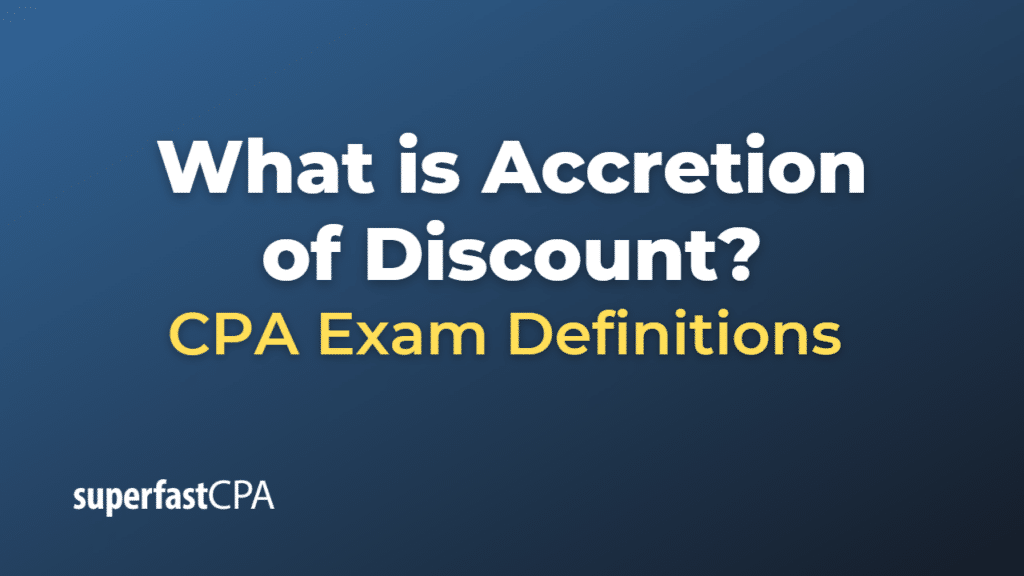Accretion of Discount
Accretion of discount refers to the gradual increase in the value of a financial instrument, typically a bond, that was initially issued at a discount to its face value. This increase in value is the result of the bond’s interest income being recognized over time, as the bond’s value grows from its discounted purchase price to its full face value at maturity.
When a bond is issued at a discount, the difference between the purchase price and the face value represents the interest income that the bondholder will earn over the bond’s life. The accretion of discount is the process of gradually recognizing this interest income in the financial statements.
Accretion of discount can be calculated using two methods:
- Straight-line method: This method evenly distributes the interest income over the bond’s life. The total interest income is divided by the number of periods (usually years) to determine the amount of interest income to be recognized in each period.
- Effective interest method: This method is a more accurate way of recognizing interest income, as it considers the time value of money. It involves calculating the interest income in each period based on the carrying value of the bond and the effective interest rate. The carrying value of the bond is then increased by the interest income recognized in that period.
Accretion of discount is an essential concept in bond accounting, as it ensures that the bond’s interest income is recognized accurately over its life, providing a more precise representation of the bondholder’s financial position and performance.
Example of Accretion of Discount
Let’s consider an example of accretion of discount using the effective interest method for a zero-coupon bond.
Suppose an investor purchases a 3-year zero-coupon bond with a face value of $1,000 for $850. The bond does not pay periodic interest but will be redeemed at its full face value at maturity. The difference between the purchase price ($850) and the face value ($1,000) represents the interest income that the investor will earn over the bond’s life.
To account for the accretion of discount, we need to determine the effective interest rate (yield to maturity) first. Let’s assume the effective interest rate is 5.47% per year. Using the effective interest method, the investor will recognize the interest income as follows:
Year 1: Interest Income = Carrying Value * Effective Interest Rate Interest Income = $850 * 0.0547 ≈ $46.50 New Carrying Value = $850 + $46.50 = $896.50
Year 2: Interest Income = $896.50 * 0.0547 ≈ $49.06 New Carrying Value = $896.50 + $49.06 = $945.56
Year 3: Interest Income = $945.56 * 0.0547 ≈ $54.44 New Carrying Value = $945.56 + $54.44 = $1,000 (face value)
At the end of the 3-year period, the bond’s carrying value has increased to its face value of $1,000, and the investor has recognized the full $150 ($1,000 – $850) of interest income through the accretion of discount.
This example demonstrates the concept of accretion of discount as it applies to a zero-coupon bond, gradually increasing the bond’s value over its life to reflect the earned interest income using the effective interest method.













